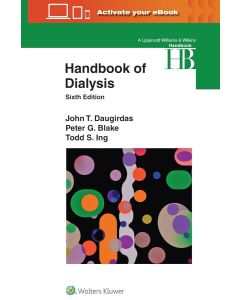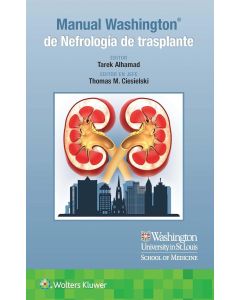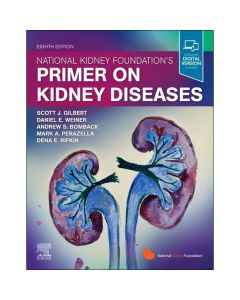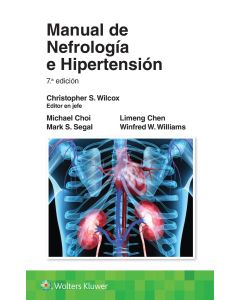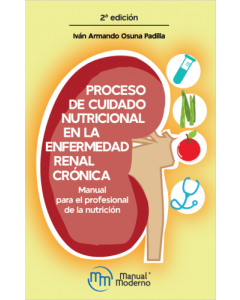Handbook Of Dialysis Therapy, 6Th Edition
Incluye Gastos de Importación
-
Especialidad
- Nefrología
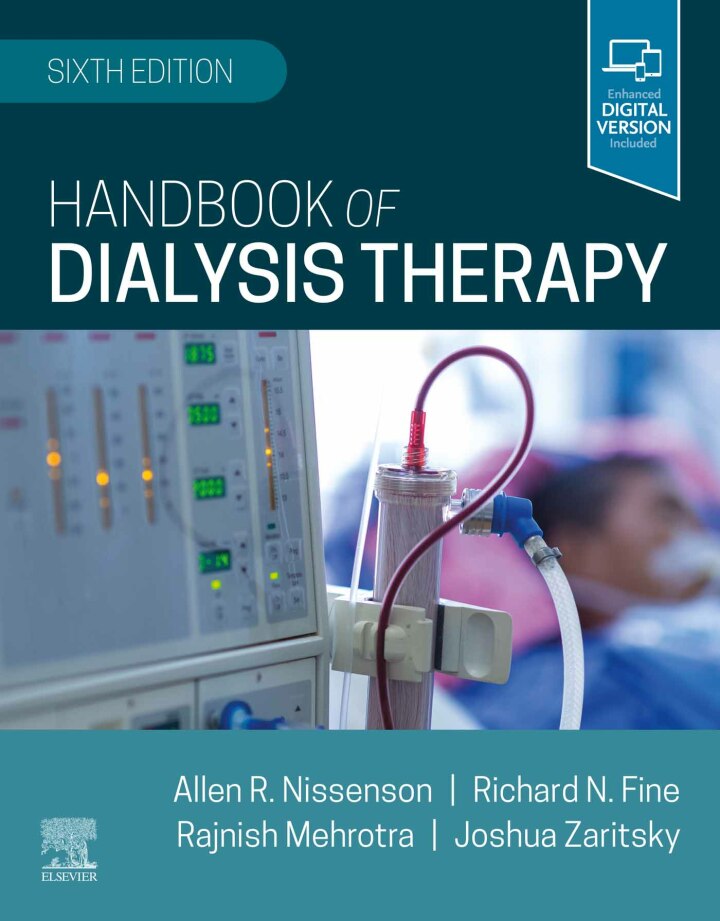
PART I: Dialysis Therapy for Adults
Section 1: Overview of ESKD
1 Demographics of the End-Stage Renal Disease Patient
2 Uremic Toxicity
3 Initiation of Dialysis Therapy
Section 2: Hemodialysis
4 Urea Kinetic Modeling for Guiding Hemodialysis Therapy in Adults
5 The Dialysis Prescription
6 Selecting a Dialyzer: Technical and Clinical Considerations
7 Water Treatment Equipment for In-Center Hemodialysis
8 Dialysate Composition
9 Safety Monitors in Hemodialysis
10 Methods of Hemodialysis Anticoagulation
11 Common Clinical Problems in Hemodialysis
12 Hemofiltration and Hemodiafiltration
13 Wearable and Implantable Renal Replacement Therapy
14 Home Preparation and Installation for Home Hemodialysis
15 Vascular Access
16 Cannulation of Arteriovenous Vascular Access: Science and Art
17 Central Venous Access for Hemodialysis
18 Noninfectious Complications From Vascular Access
19 Infectious Complications From Vascular Access
Section 3: Peritoneal Dialysis
20 Determination of Continuous Ambulatory Peritoneal Dialysis and Automated Peritoneal Dialysis Prescriptions
21 Peritoneal Dialysis Cyclers and Other Mechanical Devices
22 Peritoneal Dialysis Solutions
23 Solute Management With Peritoneal Dialysis
24 Volume Management With Peritoneal Dialysis
25 Peritoneal Access Devices, Placement Techniques, and Maintenance
26 Peritoneal Catheter Exit Site and Tunnel Infections
27 Peritonitis in Peritoneal Dialysis
28 Abdominal Hernias With Peritoneal Dialysis
29 Dialysate Leaks with Peritoneal Dialysis
30 Hydrothorax and Peritoneal Dialysis
31 Abdominal Catastrophes, Peritoneal Eosinophilia, and Other Unusual Events in Peritoneal Dialysis
32 Metabolic Complications of Peritoneal Dialysis
Section 4: Management of Uremic Complications
33 Acid–Base Homeostasis in Dialysis
34 Nutritional Management of Hemodialysis Patients
35 Intradialytic Parenteral Nutrition and Intraperitoneal Nutrition
36 Nutritional Management in Peritoneal Dialysis
37 Anemia and Its Treatment in Patients With End-Stage Kidney Disease
38 Resistance to Erythropoiesis Stimulating Agent (ESA) Treatment
39 Chronic Kidney Disease–Mineral and Bone Disorder
40 Phosphate Management in Patients with End-Stage Kidney Disease
41 Use of Vitamin D Sterols and Calcimimetics in Patients With End-Stage Renal Disease
42 Parathyroidectomy
43 Acquired Cystic Kidney Disease
Section 5: Management of Co-Existing Illnesses and Special Populations
44 The Challenges of Blood Pressure Control in Hemodialysis Patients
45 Arrhythmias in Hemodialysis Patients
46 Management of Ischemic Heart Disease, Heart Failure, and Pericarditis in Patients Undergoing Long-Term Dialysis
47 Avoidance and Treatment of Cardiovascular Disease in Dialysis
48 Management of Dyslipidemia in Long-Term Dialysis Patients
49 End-Stage Kidney Failure in the Diabetic Patient
50 Care of Elderly Dialysis and End-Stage Kidney Disease Patients
51 Liver Disease and Gastrointestinal Disorders in Dialysis Patients
52 Abnormalities of Thyroid Function in Chronic Dialysis Patients
53 Care of the Human Immunodeficiency Virus–Infected End-Stage Kidney Disease Patient
54 COVID-19 and Dialysis Patients
55 Psychosocial Issues in Patients Treated With Dialysis
56 Evaluation and Treatment of Sexual Dysfunction
57 Pregnancy in Dialysis Patients
58 Principles of Drug Usage in Dialysis Patients
59 Medication Management
60 Physical Activity, Function, and Exercise-Based Rehabilitation for People on Dialysis
61 Physical, Psychosocial, and Vocational Rehabilitation of Patients Undergoing Long-Term Dialysis
62 Preventive Care in End-Stage Renal Disease
Section 6: Systems Management for the Care of Dialysis Patients
63 Ethical Considerations in the Care of Dialysis Patients: The New Paradigm
64 Improving Outcomes for End-Stage Renal Disease Patients: Shifting the Quality Paradigm
65 Quality, Safety, Accountability, and Medical Director Responsibilities
66 Application of Telemedicine to Kidney Failure Patients
Section 7: Acute Kidney Injury and Poisonings
67 Continuous Renal Replacement Therapies for Acute Kidney Injury
68 Anticoagulation for Continuous Renal Replacement Therapy
69 Treatment of Poisoning with Extracorporeal Methods
PART II: Dialysis Therapy for Children
70 Vascular Access and Peritoneal Dialysis Catheter Placement in Children
71 Infant Hemodialysis
72 Urea Kinetic Modeling for Hemodialysis Prescription in Children
73 Alternate Hemodialysis Prescriptions in Children
74 Anticoagulation in Children Undergoing Hemodialysis, Continuous Renal Replacement Therapy, or Apheresis Therapy
75 Prescribing Peritoneal Dialysis in Children
76 Nutritional Management of Children Undergoing Peritoneal Dialysis
77 Peritoneal Dialysis in Neonates and Infants
78 Dialysis for Inborn Errors of Metabolism
79 Neurocognitive Function in Pediatric Dialysis
80 Growth in Children With End-Stage Kidney Disease
81 Adequacy of Peritoneal Dialysis/Assessing Peritoneal Function in Pediatric Patients
82 Continuous Renal Replacement Therapy in Pediatric Patients
83 Prevention and Treatment of Bone Disease in Pediatric Dialysis Patients
84 Management of Anemia in Children Undergoing Dialysis
85 Prevention and Treatment of Cardiovascular Complications in Children Undergoing Dialysis
86 Infectious Complications in Children Undergoing Dialysis
87 Caring for the Teenager in an Adult Unit
Index


